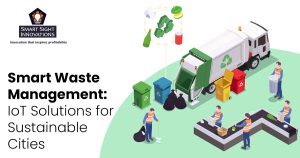
Our daily interactions with technology have been completely transformed by the Internet of Things (IoT). It is rapidly modifying our world, connecting everyday devices to the internet and enabling them to collect, share, and analyze data. From smart thermostats to connected appliances and industrial sensors, these devices play a crucial role in automation, efficiency, and remote monitoring.
It’s estimated that by 2030, there will be more than eight billion IoT devices across all industry sectors. However, keeping these devices secure and functioning optimally requires regular updates.
Unlike traditional software updates that require manual intervention, IoT devices leverage the power of remote updates, ensuring seamless operation and enhanced functionality. This article explains the technologies and the protocols that enable remote updates for IoT devices to harness the full potential of the connected world.
Remote Updating and Its Importance
Remote updating, is a process by which software, firmware, or configuration changes are deployed to devices remotely, without requiring physical access to the device. This method allows for the efficient and convenient management of updates across a large number of devices, regardless of their location. Remote updating is crucial for the following reasons:
1. Security Enhancement
One of the foremost reasons for remote updating is security. IoT devices are often vulnerable to cybersecurity threats due to their interconnected nature and the diverse range of applications they serve. Hackers constantly exploit vulnerabilities in device firmware or software to gain unauthorized access, steal sensitive data, or launch attacks. Remote updating allows manufacturers to promptly deploy security patches and fixes to address known vulnerabilities, thus reducing the risk of exploitation and enhancing overall cybersecurity posture.
2. Mitigation of Vulnerabilities
Vulnerabilities in IoT devices can have far-reaching consequences, especially in critical infrastructure sectors such as healthcare, energy, and transportation. Remote updating enables manufacturers to respond swiftly to newly discovered vulnerabilities or emerging threats by delivering patches directly to affected devices. This proactive approach minimizes the window of exposure and mitigates the potential impact of security breaches, safeguarding both the devices and the ecosystems they operate in.
3. Feature Enhancements
Beyond security, remote updating facilitates the delivery of feature enhancements and performance optimizations to IoT devices. As technology advances and user expectations evolve, manufacturers often introduce new functionalities or improvements to existing features through software updates. Remote updating enables these updates to be delivered seamlessly to deployed devices, ensuring that users benefit from the latest innovations without the need for manual intervention or device replacement.
4. Operational Efficiency
For organizations deploying large-scale IoT deployments, managing updates manually can be a logistical nightmare. Remote updating streamlines the update process, allowing updates to be distributed to thousands or even millions of devices simultaneously, regardless of their physical location. This improves operational efficiency, reduces downtime, and minimizes the resources required for maintenance and support.
5. Regulatory Compliance
In many industries, regulatory compliance mandates regular software updates and security patches to mitigate risks and ensure data protection. Remote updating enables organizations to demonstrate compliance with industry regulations and standards by maintaining up-to-date software versions and implementing necessary security measures. Failure to comply with regulatory requirements can result in penalties, legal liabilities, and reputational damage, making remote updating essential for regulatory adherence.
Understanding the Remote Update Process for IoT Devices
The remote update process for IoT devices involves several stages, each of which plays a vital role in the seamless deployment of updates.
1. Notification
The remote update process typically begins with a notification to inform users or administrators about the availability of updates for their IoT devices. These notifications provide details about the update, including its purpose, contents, and any actions required from the user or administrator.
2. Preparation
Before initiating the update, the IoT device may perform preparatory tasks such as checking for available storage space, verifying network connectivity, and ensuring that the device is in a suitable state for updating. This preparation phase helps prevent interruptions or failures during the update process by addressing potential issues proactively.
3. Download
Once prepared, the IoT device proceeds to download the update package from a remote server or cloud-based repository. This download can occur over the internet or through wireless communication protocols such as Wi-Fi, cellular networks, or Bluetooth, depending on the device’s connectivity capabilities.
4. Verification
After downloading the update package, the IoT device verifies its integrity and authenticity to ensure that it has not been tampered with or compromised during transmission. Verification mechanisms such as digital signatures, checksums, or cryptographic hashes are used to confirm that the update comes from a trusted source and has not been altered in transit.
5. Installation
Once the update package has been successfully verified, the IoT device proceeds to install the update. Depending on the complexity of the update and the device’s architecture, the installation process may require a reboot, temporary interruption of device functionality, or execution of specific installation scripts.
6. Validation
After installation, the IoT device undergoes validation to ensure that the update has been applied correctly and that device functionality remains intact. This validation phase may include running automated tests, performing system checks, or collecting user feedback to confirm the success of the update. Validation helps verify that the device is operating as expected after the update and that no issues or compatibility problems have arisen.
7. Rollback
In the event of a failed update or unforeseen issues, IoT devices may have rollback mechanisms in place to revert to the previous software or firmware version. Rollback procedures help mitigate risks and ensure continuity of device operations in case of update-related failures. Rollback mechanisms may be automated or initiated manually by users or administrators to restore device functionality to a known good state.
How Do IoT Devices Update Remotely?
Depending on the device and its capabilities, there are a few different ways to update IoT devices remotely.
-
Firmware Updates
Firmware updates are among the most popular kinds of remote upgrades. Firmware is a software that runs on hardware to regulate particular attributes or operations. IoT devices that are connected to the internet receive firmware updates, which include bug fixes and the newest features, via push notifications.
-
Over-the-Air (OTA) Updates
The OTA updates are usually used for more complex changes such as adding new features or making major changes to the existing ones. It enhances device security, performance, and functionality while minimizing downtime and operational disruptions.
-
Software Patches
Software patches play a critical role in maintaining the security, stability, and performance of software applications. Unlike firmware upgrades that need massive downloads, patches are typically distributed in tiny bundles that just include the necessary updates.
Different Types of OTA Updates for IoT Devices
The way an IoT device receives its updates remotely depends on several factors, including its capabilities, network architecture, and security needs. Here’s a breakdown of the three main types of OTA updates for IoT devices:
1. Edge-to-Cloud (E2C) Updates
This is the simplest and most common approach for consumer-grade IoT devices. In E2C updates, the device establishes a direct connection to the update server in the cloud. The device then downloads the update package and installs it autonomously.
Pros:
- Simple and efficient, requires minimal setup, and relies on existing internet connectivity.
- Suitable for individual devices and small deployments.
- Cost-effective as it does not require any additional hardware.
Cons:
- Requires robust authentication mechanisms to prevent unauthorized updates.
- Large-scale deployments can strain the update server during peak update periods, causing server load.
- Difficult to schedule updates for individual devices or perform rollbacks.
Use Cases:
Smart home devices, wearables, fitness trackers, and personal IoT gadgets.
2. Gateway-to-Cloud (G2C) Updates
This method utilizes a central gateway device as an intermediary between individual IoT devices and the cloud server. The gateway collects updates from the server and distributes them to the connected devices on the local network.
Pros:
- The gateway acts as a first line of defense, filtering updates and ensuring only authorized ones reach devices, thus providing enhanced security.
- The gateway aggregates update requests, alleviating pressure on the central server, reducing server load.
- Enables scheduling updates for specific groups of devices within the local network.
Cons:
- Requires additional hardware (gateway) and configuration.
- If the gateway malfunctions, updates can be disrupted for all connected devices.
- G2C may not be ideal for very large deployments with numerous gateways.
Use Cases:
- Industrial IoT deployments (e.g., sensor networks in factories)
- Building automation systems (e.g., HVAC control in smart buildings)
- Large-scale sensor networks (e.g., environmental monitoring systems)
3. Edge-to-Gateway-to-Cloud (E2G2C) Updates
This hybrid approach combines elements of E2C and G2C updates. Devices first connect to a local gateway, which then communicates with the cloud server to retrieve and potentially manage updates before distributing them to the devices.
Pros:
- Offers a balance between individual device updates (E2C) and centralized control (G2C).
- Can handle diverse device types and deployments with varying sizes.
- Gateways provide additional security measures while allowing direct communication with the cloud.
Cons:
- Requires proper configuration of gateways and communication protocols between devices and gateways.
- Involves additional hardware and software costs compared to E2C.
Use Cases:
- Smart factories with diverse equipment and sensors.
- Connected healthcare systems with various patient monitoring devices.
- Applications with a mix of low-power devices and high-bandwidth gateways.
Challenges in Remote Updating and Strategies for Overcoming Them
1. Connectivity Issues
In environments with poor or unreliable internet connectivity, remote updating may be challenging. To overcome this, developers can implement mechanisms such as resumable downloads, differential updates, or local caching to minimize the impact of intermittent connectivity on the update process.
2. Bandwidth Constraints
Limited bandwidth can slow down the download and installation of updates, especially for large update packages. Mitigation strategies include optimizing update packages for size, prioritizing critical updates, and scheduling updates during off-peak hours to reduce network congestion.
3. Compatibility Concerns
Updates may introduce compatibility issues with existing software, configurations, or peripheral devices, leading to system instability or malfunctions. Thorough testing and validation of updates across different environments and use cases can help identify and address compatibility issues before deployment.
4. Security Risks
Ensuring the security of remote updating mechanisms is crucial to prevent unauthorized access, tampering, or exploitation by malicious actors. Implementing secure communication protocols, encryption mechanisms, and authentication mechanisms can help mitigate security risks associated with remote updating.
5. User Consent and Privacy
Obtaining user consent for updates and respecting user privacy preferences are important considerations in remote updating. Providing clear and transparent communication about the purpose, benefits, and potential impacts of updates can help build trust with users and encourage them to consent to updates.













